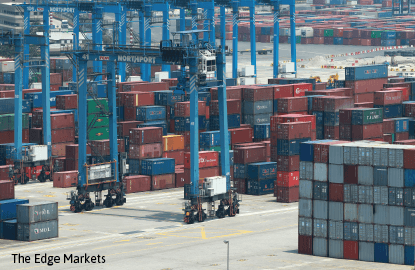
This article first appeared in The Edge Malaysia Weekly, on December 21 - 27, 2015.
THANKS to the stronger US dollar, those in the export-oriented sectors such as semiconductor players and furniture makers were among the big winners this year. But clearly, rubber glove manufacturers and plastic-related companies were the top beneficiaries as they were helped not only by the stronger US dollar but also lower input costs amid weak crude oil prices.
Year to date, the ringgit has fallen 23% to 4.316 against the greenback, while global oil prices have declined 38% to US$36.77 per barrel at the time of writing.
It is noteworthy that the top four locally listed glove manufacturers, namely Top Glove Corp Bhd, Kossan Rubber Industries Bhd, Supermax Corp Bhd and Hartalega Holdings Bhd, reported stronger earnings this year.
Top Glove saw its net profit jump 2.6 times year on year to RM128 million in the first quarter ended Nov 30 (1QFY2016), as its rubber glove sales volume hit an all-time high amid lower raw material prices and a stronger US dollar.

Similarly, Kossan recorded a 41% y-o-y growth in earnings to RM148 million in the nine months ended Sept 30 (9MFY2015). Hartalega, which has had an unbroken revenue growth since its listing in 2008, also saw its net profit increase 17% y-o-y to RM123 million in the first half ended Sept 30 (1HFY2016).
The share prices of Top Glove, Kossan, Supermax and Hartalega have risen 170%, 100%, 76% and 66% respectively YTD.
In an Oct 26 report, AmResearch analyst Cheryl Tan says rubber glove manufacturers are expected to enjoy another round of price-earnings ratio (PER) rerating, with their premium valuations justified by their prime position as exporters operating in a defensive sector.
“[Also], it is one of the few industries that are experiencing positive earnings upgrades from volume growth and margin expansion,” she adds. AmResearch has an “overweight” call on the rubber glove sector.
Meanwhile, plastic products companies, including Johor-based precision plastic injection mould manufacturer LCTH Corp Bhd, are among the beneficiaries of the current weak crude oil prices, which resulted in lower resin prices, hence easing the cost pressure of manufacturers.
LCTH also benefited from the appreciating US dollar. For the nine months ended Sept 30 (9MFY2015), the group reported a net profit of RM15.5 million, of which RM5 million was foreign exchange (forex) gains. Last year, 58% of its sales were denominated in foreign currencies, primarily the US dollar.
In the same period, Tomypak Holdings Bhd and Daibochi Plastic and Packaging Industry Bhd — the country’s two largest plastic flexible packaging producers — saw their earnings jump 277% and 13% y-o-y respectively.
YTD, Tomypak’s share price has more than doubled while Daibochi’s rose 22%.
According to industry experts, these export counters are expected to continue performing well next year as the favourable forex trend is likely to continue.
Vincent Khoo, head of research at UOB Kay Hian Malaysia, opines that the ringgit has already bottomed out, as China and Malaysia have deepened their economic ties since Chinese Premier Li Keqiang’s visit to Kuala Lumpur last month.
It was reported that China will buy more Malaysian government bonds and grant the country a RMB50 billion (RM33 billion) quota under the Renminbi Qualified Foreign Institutional Investors (RQFII) programme to invest in Chinese stocks and bonds as it looks to strengthen ties with Southeast Asia.
Generally, Khoo says, 2016 is expected to be another good year for Malaysian exporters.
“Although we predict the ringgit will strengthen to 3.98 at end-2016, Malaysian exporters should benefit from an effectively stronger average US dollar rate in 2016, given the base effect in the first half of 2015,” he tells The Edge.
Khoo, however, highlights that the share prices of different exporters would react differently. For instance, stocks of exporters that have lower PER should be more resilient if the ringgit rebounds.
Mercury Securities research head Edmund Tham tells The Edge that most export-oriented sectors, especially rubber glove makers and plastic manufacturers, have seen a positive impact from the stronger US dollar. Nevertheless, any potential gain will be offset by US dollar-denominated raw materials and borrowings.
“It’s quite hard to say if the ringgit will get any weaker because many factors are in play. We need to look at the US federal funds rate, global oil prices, commodity prices and foreign investors’ perception of Malaysia,” he comments.
It is worth noting that local furniture companies such as Lii Hen Industries Bhd and Poh Huat Resources Holdings Bhd also reported earnings growth of 80% to 90% in their cumulative period of 2015.
Riding the wave of these furniture stocks, the share prices of particle board manufacturers Evergreen Fibreboard Bhd and HeveaBoard Bhd have advanced by more than 270% YTD.
The rally was mainly attributed to optimism that wood-based product manufacturers, being export-oriented, will benefit from the stronger US dollar.
In a Dec 7 research note, TA Securities analyst Paul Yap says he remains bullish on the local semiconductor industry, despite a flattish year for the sector in 2015.
“We expect companies under our coverage to outpace the industry, underpinned by their exposure to the fastest-growing segments of the market and a weaker ringgit,” he says.
TA Securities maintains its “overweight” rating for the semiconductor sector, with a “buy” call on Unisem (M) Bhd, Malaysian Pacific Industries Bhd and Inari Amertron Bhd.
Save by subscribing to us for your print and/or digital copy.
P/S: The Edge is also available on Apple's AppStore and Androids' Google Play.